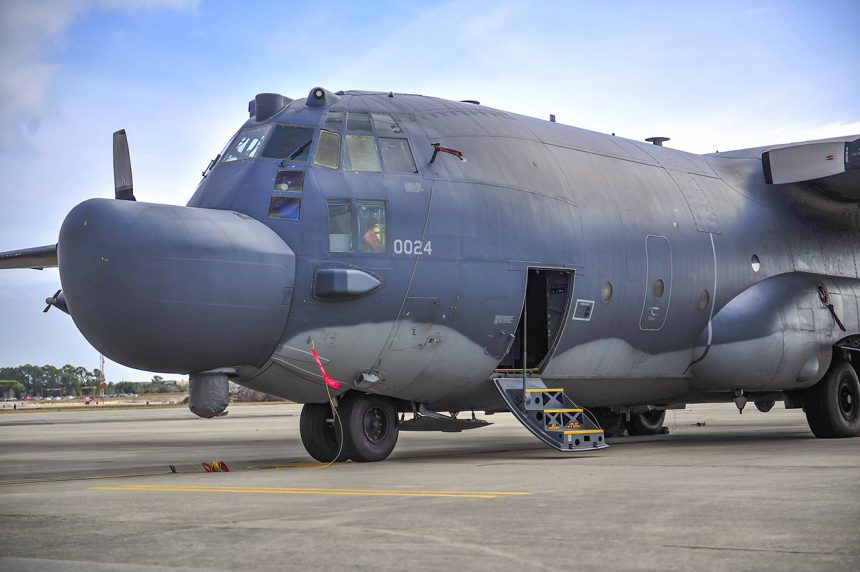Coast Guard Reports Indicate Airman Fell Out of Aircraft Earlier Tuesday.
U.S. Air Force and Coast Guard search and rescue crews are searching for an unidentified crewmember who fell out of the back of a C-130 cargo aircraft ten miles into the Gulf of Mexico during the day on Tuesday.
An updated report published by Fox News and attributed to the Air Force Times said that, “The fall happened during a parachute-jump training exercise out of Hurlburt Field.”
An additional report from Florida’s WKRG-TV said that the search operation was underway, “about a mile and a half south of Santa Rosa Island, Fla., along the Florida Panhandle”.
A report from WEAR-TV in Florida went on to say, “The Coast Guard said the airman, identified only as a staff sergeant, dropped about 1,500 feet into the water and his parachute deployed.”
Additional reports said that crewmembers on board the C-130 aircraft had spotted the airman on the surface, treading water, but lost sight of him as the aircraft maneuvered following the incident.
In a story first reported by nwfdailynews.com of Florida, reporter Jim Thompson said, “Coast Guard Petty Officer Kamil Zdankowski confirmed the search late Tuesday evening, about 10 hours after Coast Guard Station Destin was alerted about the incident.” Latest reports early Wednesday morning local time suggest the search area may have now shifted.
Thompson went on to report that, “Coast Guard crews were searching Tuesday evening about 10 miles offshore, south of Hurlburt Field, headquarters of Air Force Special Operations Command, according to Zdankowski.”
Zdankowski said the airman fell out of the aircraft and into the Gulf of Mexico about two miles south of Hurlburt Field, and the Coast Guard was adjusting its search area on the basis of currents in the area.
Weather in the region at approximately the time of the incident was reported as an air temperature of 78-degrees Fahrenheit at Hurlburt Field at 1:00 PM local time with moderate winds NNW at 12 mph. Water temperatures in the region were reported as high as 72-degrees Fahrenheit, although temperatures farther out to sea vary greatly.
Hurlburt Field is home to the USAF 1st Special Operations Wing. The unit conducts aviation operations in support of the Joint Special Operations Command.
Three different units operate versions of the C-130 Hercules from Hurlburt. They are the 4th Special Operations Squadron, who fly the AC-130U Spook gunship variant of the C-130; The 15th Special Operations Squadron who fly the MC-130H Combat Talon II; and the 73rd Special Operations Squadron, who fly the AC-130J Ghostrider gunship.
No reports indicate if the aircraft involved in the incident originated from any of the units located at Hurlbert Field.









